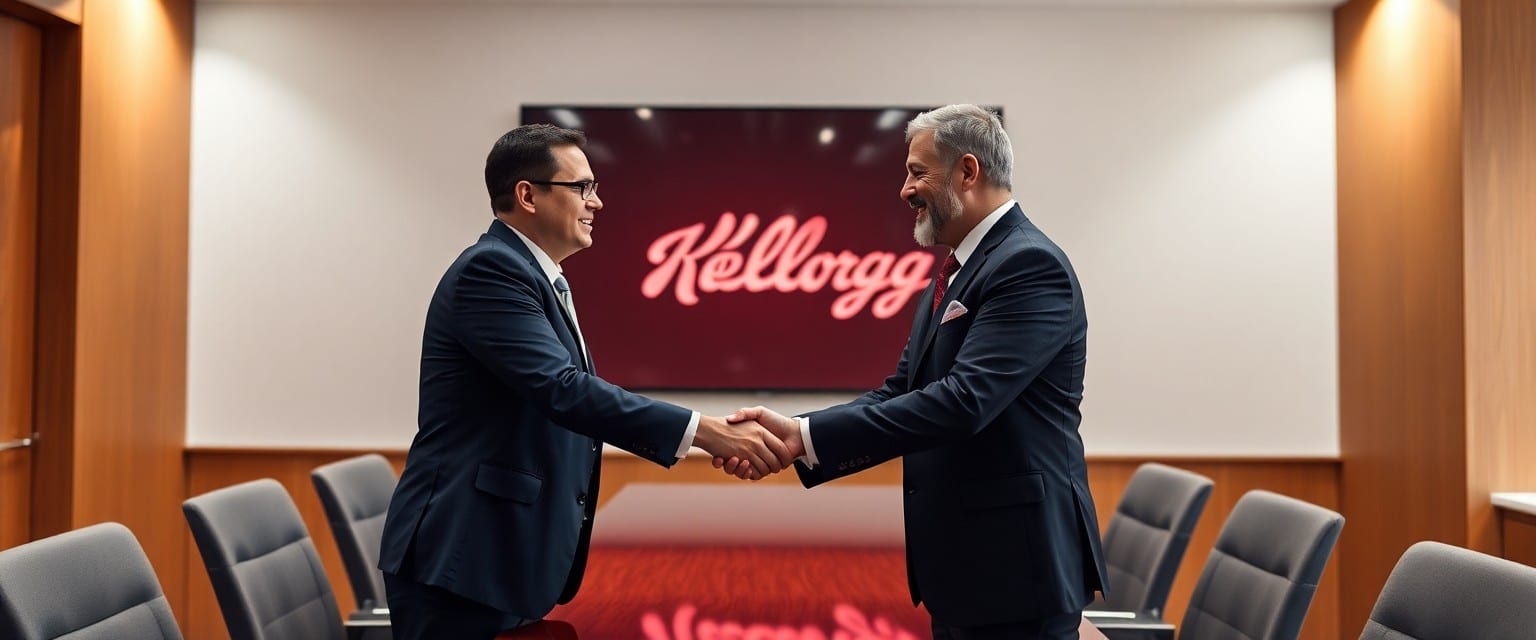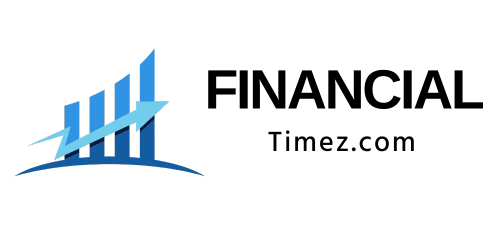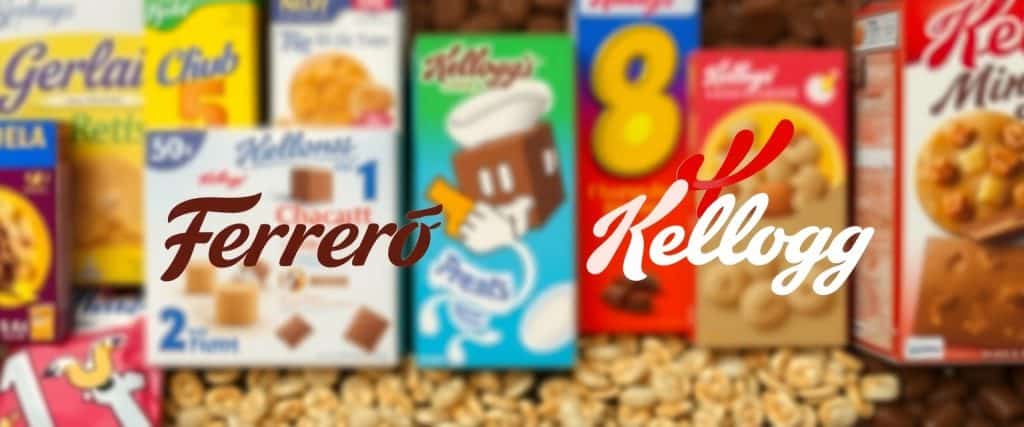Understanding Ferrero’s Strategic Move
Ferrero’s $3.1 billion acquisition of WK Kellogg gives you direct access to a legacy cereal portfolio worth roughly $1.5 billion, including giants like Raisin Bran and Corn Flakes. By combining Ferrero’s strong foothold in sweet treats with WK Kellogg’s 14,000 employees and 22 plants, you’re seeing a clear bid to expand category breadth amid shifting consumer tastes. This move allows Ferrero to leverage scale, diversify beyond confectionery, and navigate volatile price-driven demand that’s pushing consumers toward private labels—positioning the company for sustained growth in an increasingly competitive food landscape.
The Numbers Behind the $3.1 Billion Deal
Ferrero’s $3.1 billion acquisition of WK Kellogg represents more than just a headline figure; it reflects a strategic investment in a company with a market cap around $1.5 billion, signaling a substantial premium paid. The deal encompasses WK Kellogg’s 14,000 employees and 22 plants, positioning Ferrero to leverage significant operational scale. You should note how the premium reflects market confidence in Kellogg’s portfolio strength amid industry shifts, particularly as consumer tastes evolve and competition intensifies.
Breakdown of WK Kellogg’s Valuation
WK Kellogg’s valuation hinges largely on its iconic cereal brands like Raisin Bran, Corn Flakes, and Apple Jacks, which carry enduring brand equity. The company’s assets include extensive manufacturing capacity, valued at steady revenue streams despite current market volatility. You’ll see that this valuation also factors in potential growth beyond cereals, as stated by CEO Gary Pilnick, and the ability to capitalize on Ferrero’s distribution and marketing prowess to drive future profitability.
Implications for Ferrero’s Financial Growth
The acquisition provides Ferrero with an immediate boost in North American market presence, diversifying its revenue base beyond sweet treats. Integrating WK Kellogg’s cereal portfolio expands Ferrero’s category breadth, enhancing its resilience against fluctuating consumer spending. You’ll find that this deal is poised to generate synergies through combined supply chains and innovation capabilities, potentially accelerating Ferrero’s top-line growth in the competitive food and beverage sector.

The Evolving Snack Industry Landscape
The snack industry is navigating a period of intense change, driven by fluctuating consumer habits and rising economic pressures. You’ve likely noticed shoppers becoming more price-conscious, often choosing cheaper alternatives or rethinking their typical purchases. Major companies like Ferrero are responding by consolidating their portfolios and seeking new growth avenues beyond traditional categories, adjusting to these shifting demands in a market where innovation and adaptability often dictate success.
Shifts in Consumer Preferences
Consumers are increasingly prioritizing value and convenience, reshaping how you see snack brands on the shelves. With inflation affecting groceries, many shoppers are cutting back on indulgent treats or experimenting with healthier options, forcing companies like WK Kellogg and Ferrero to rethink product lines. This evolving preference impacts your daily choices, as you weigh familiar brand trust against new alternatives that promise affordability or enhanced nutrition.
The Rise of Private Labels and Competition
You’re witnessing private label products gaining significant traction as retailers expand their in-house brands, which often come at lower prices without compromising on quality. This trend intensifies competition for established players like WK Kellogg, whose cereal sales face pressure from these value-driven alternatives. Private labels now claim growing shelf space, challenging traditional brands to innovate or offer competitive pricing to maintain their market share.
Private labels have transformed from budget-friendly options to serious contenders, capturing nearly 17% of the US packaged food market, according to recent industry reports. Retail giants such as Walmart and Kroger invest heavily in their brands, leveraging supply chain efficiencies to undercut national brands on price. This forces you to carefully evaluate your purchases, and companies like Ferrero must navigate maintaining brand loyalty while adapting to this multifaceted competition. For WK Kellogg, standing out amid the surge of private label cereals means leveraging iconic names like Raisin Bran and Apple Jacks while exploring product innovation and premium offerings to retain consumer interest.
WK Kellogg’s Transformation and Future Plans
WK Kellogg has entered a new chapter since its 2022 spin-off from Kellogg Co, standing independently with a sharp focus on revitalizing its legacy cereal brands. The company now oversees 22 plants and employs approximately 14,000 people, positioning itself to adapt swiftly to changing consumer tastes and competitive pressures. With Ferrero’s acquisition, you can expect enhanced resources and strategic innovation aimed at expanding beyond traditional cereals into new snacking categories, ensuring WK Kellogg remains a formidable presence in a rapidly evolving food market.
The Impact of the Spin-off from Kellogg Co
The 2022 spin-off separated WK Kellogg from its parent company, allowing both entities to specialize and strengthen their core operations. WK Kellogg gained agility to focus solely on its cereal portfolio, including household names like Raisin Bran and Corn Flakes. This restructuring gave it the independence to explore growth opportunities tailored to consumer trends without being weighed down by Kellogg’s broader snack business, now rebranded as Kellanova. For you, this means WK Kellogg can pursue targeted innovation and respond faster to market shifts.
Promises of Investment and Growth from Ferrero
Ferrero has committed to investing significantly in WK Kellogg’s brands and operations, aiming to “grow our iconic brands” with increased flexibility. With a $3.1 billion investment, Ferrero plans to leverage its expertise and scale to expand WK Kellogg’s product offerings and explore markets beyond cereal. This approach intends to strengthen the company’s competitive edge amid evolving consumer preferences driven by higher food prices and shifting demand toward private labels.
Ferrero’s strategy involves injecting capital into WK Kellogg’s R&D and marketing efforts, tapping into its global supply chain efficiencies, and optimizing plant operations across the 22 facilities. By integrating WK Kellogg’s cereal portfolio with Ferrero’s diverse snack products, including Kinder chocolates and Keebler cookies, you’re looking at a broader category reach designed to capture growth in both traditional and emerging snacking segments. This multi-pronged investment aims to boost sales momentum while encouraging innovation beyond the breakfast aisle.
Expert Perspectives on Industry Consolidation
The food and beverage sector continues to witness rapid consolidation as companies seek to strengthen their market positions amid shifting consumer dynamics. You can see how acquisitions like Ferrero’s $3.1 billion purchase of WK Kellogg are strategic moves not just for expansion, but also for gaining scale and diverse product portfolios. These deals respond directly to challenges such as rising ingredient costs, changes in buyer behavior, and the growing preference for private label brands, forcing incumbents to adapt quickly across multiple competitive fronts.
Insights from M&A Advisors
Brad Haller, senior partner at West Monroe, highlights that your business must aim for both scale and category breadth to stay competitive. Ferrero’s acquisition underscores a pattern where companies chase larger footprints and complementary brands to better navigate increased competition and volatile consumer trends. This deal exemplifies how successful M&A strategies focus on combining operational efficiencies with expanded product offerings, which in turn help tackle shrinking profit margins and evolving customer preferences head-on.
The Long-term Vision for Ferrero in North America
Ferrero’s acquisition of WK Kellogg serves as a clear step toward becoming a major North American food conglomerate. You’ll notice their strategic emphasis on leveraging Kellogg’s extensive network of 22 plants and 14,000 employees to accelerate growth and innovation. Plans to explore opportunities beyond cereal hint at diversification efforts that could reshape category dynamics, positioning Ferrero to better meet consumer demands and challenge established players through a stronger, more diversified portfolio.

Conclusion
From above, you can see that Ferrero’s acquisition of WK Kellogg for $3.1 billion positions you to witness a significant shift in the cereal and snack industry. This deal not only expands Ferrero’s portfolio with well-known cereal brands but also strengthens its presence in North America amid changing consumer preferences. By combining resources and exploring growth opportunities beyond cereal, Ferrero aims to enhance value and adapt to evolving market demands, offering you insights into the ongoing consolidation within the food and beverage sector.
Frequently Asked Questions
What is the value of Ferrero’s acquisition of WK Kellogg?
Ferrero has agreed to acquire WK Kellogg for approximately $3.1 billion, which includes $23 per share in cash for WK Kellogg shareholders. This represents a 40% premium over the stock’s recent trading price. Source
What brands does WK Kellogg own?
WK Kellogg owns several iconic cereal brands, including Froot Loops, Frosted Flakes, Rice Krispies, Special K, and Raisin Bran. The company was formed in 2023 when Kellogg’s North American cereal business was spun off into a separate entity. Source
How will this acquisition affect consumers?
The acquisition is expected to enhance Ferrero’s presence in the North American market and expand its product offerings. Consumers may see a broader range of products combining Ferrero’s confectionery with WK Kellogg’s cereals. However, specific product changes have not been announced yet. Source
When is the acquisition expected to close?
The deal is expected to close in the second half of 2025, pending regulatory approvals and shareholder consent. Source

